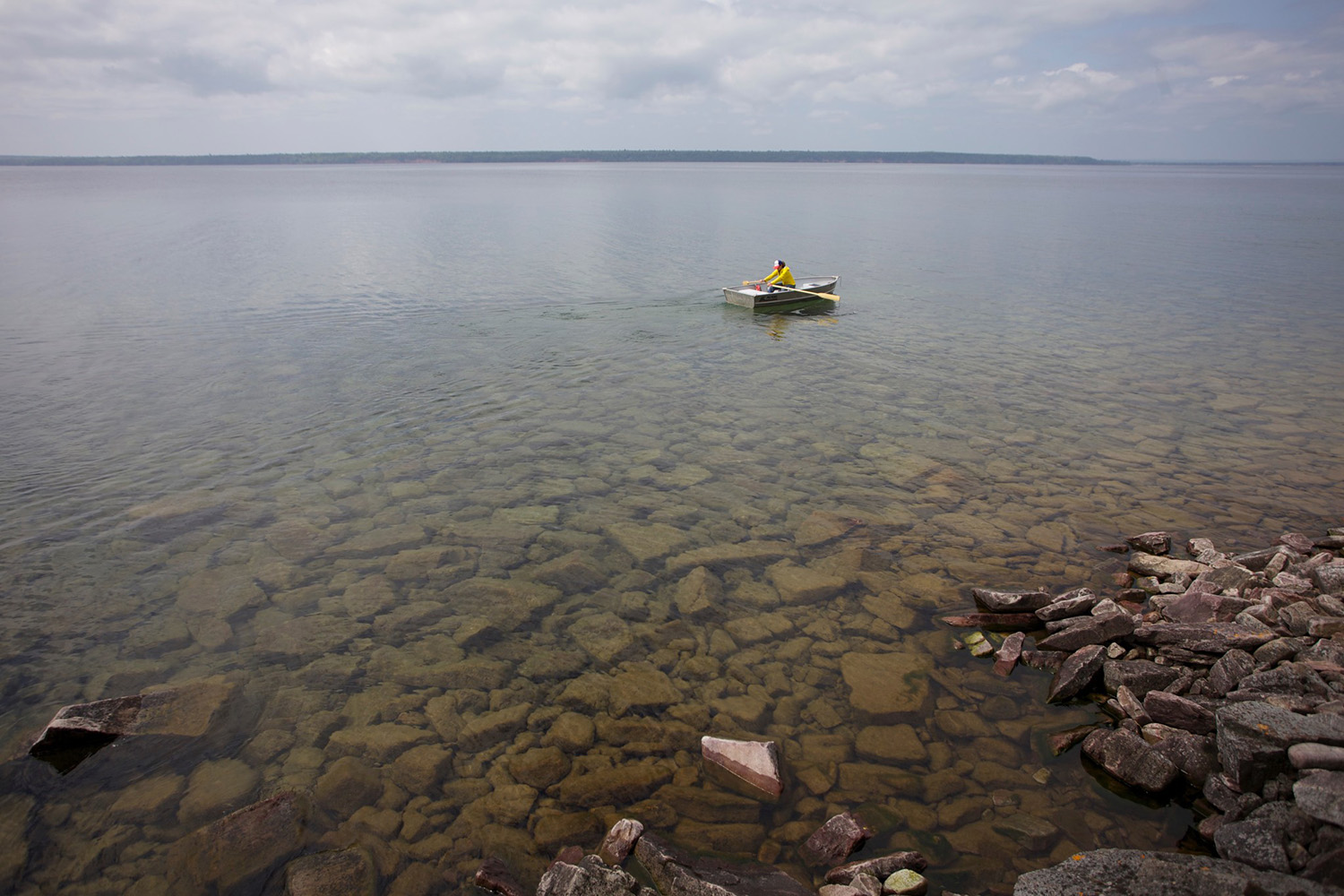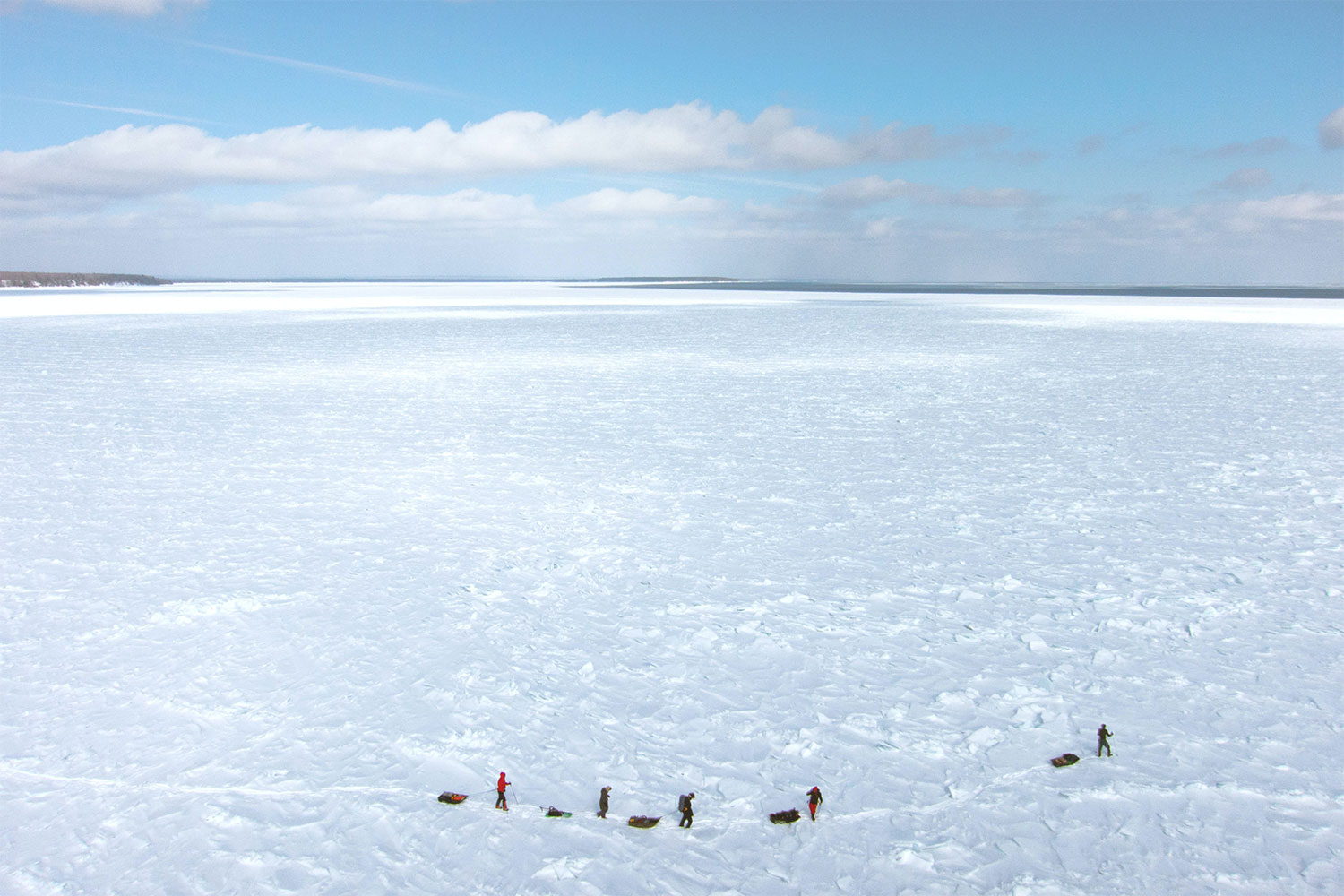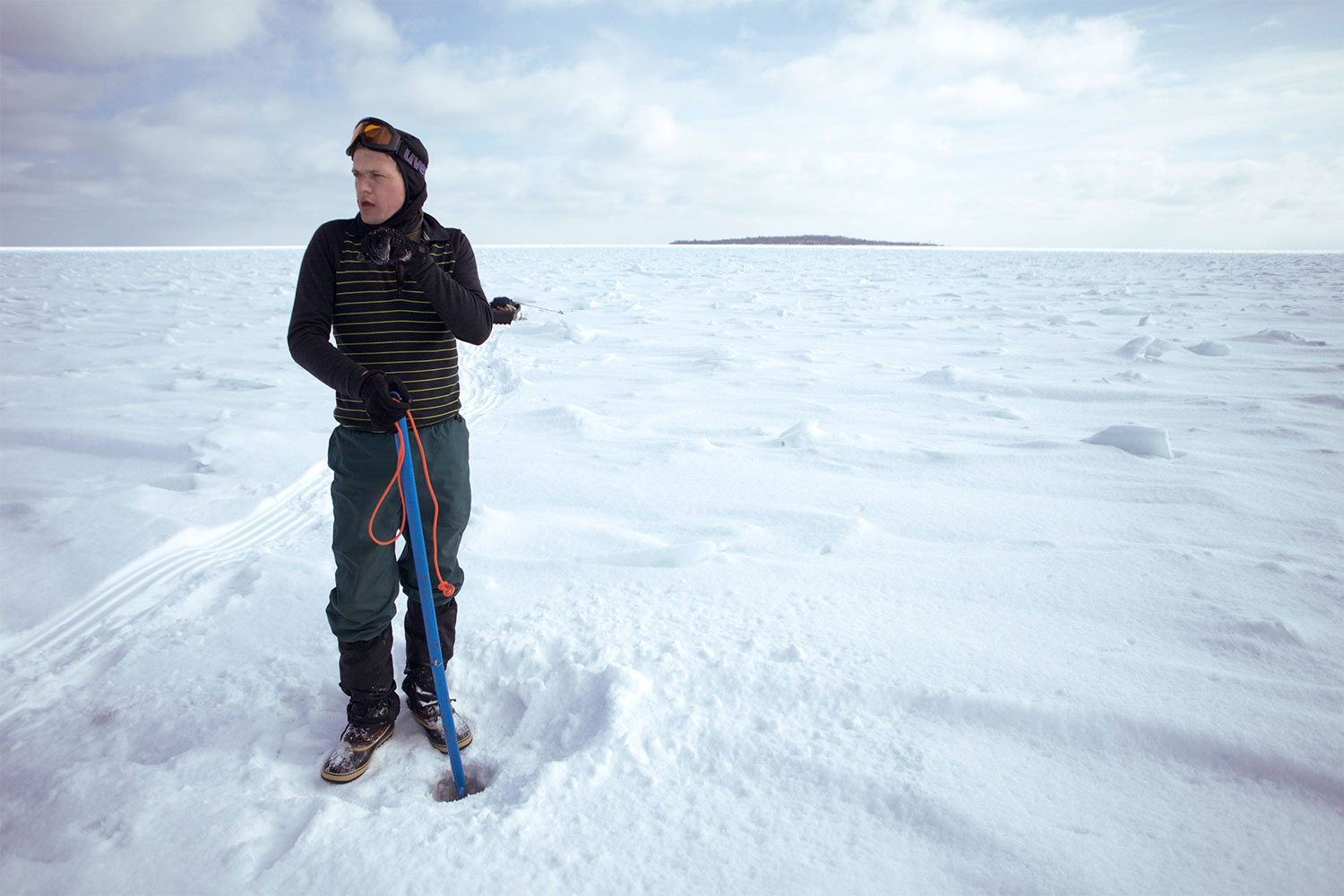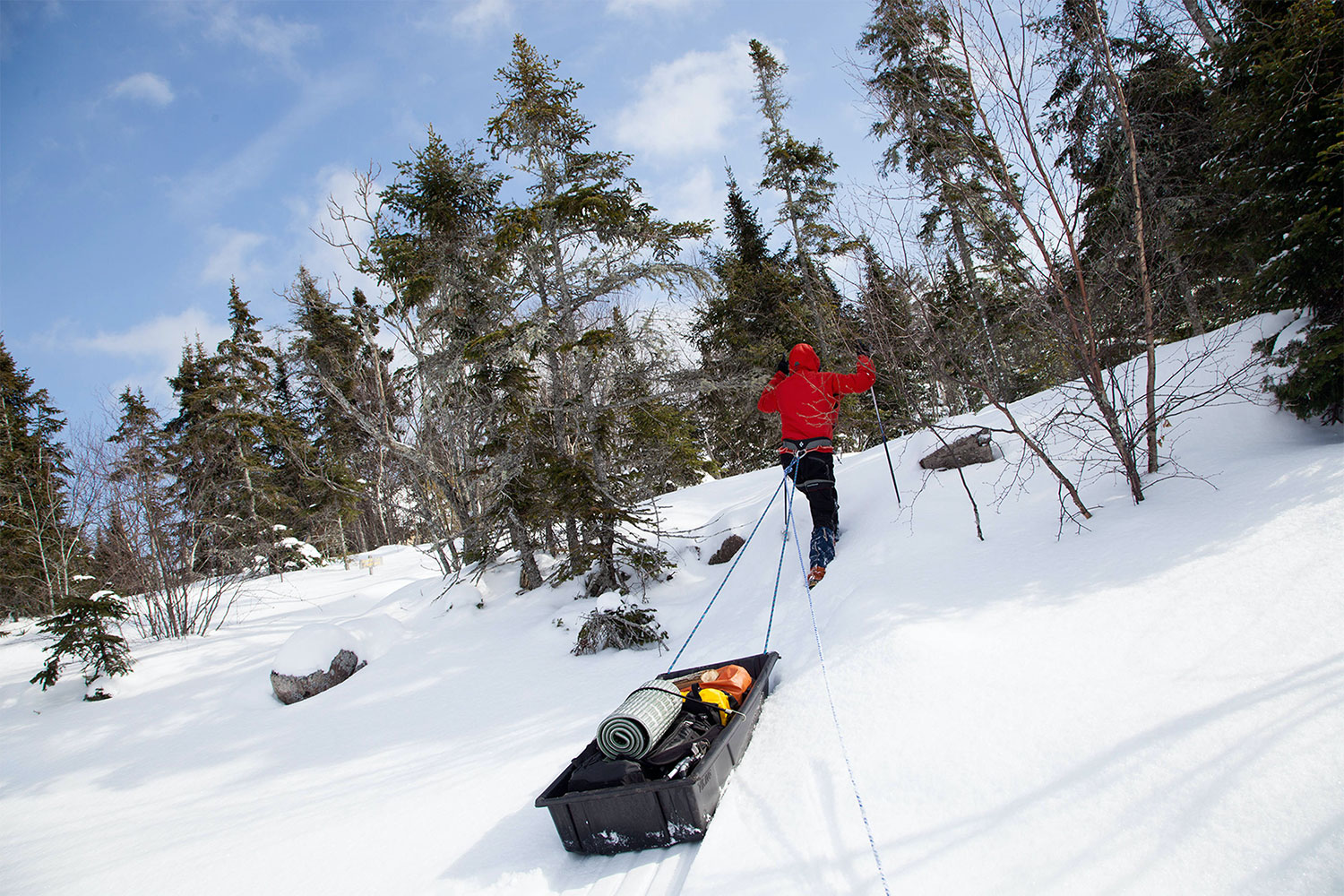There’s no time like winter for fantasizing about where you’d rather be and what you’d rather be doing there. The season of hibernation inevitably makes the senses keener and the artistic urge stronger — it’s as though we long to paint a newer, more vibrant world on top of the blank gray canvas outside our windows.
So try this fantasy on for size: Journeying north to a place where the Continental U.S. breaks off in a series of vast inland seas, pushing onward over a two-lane highway through dense forests of cedar and pine, then taking a boat three miles from the end of the world until you reach a 91-acre island, outfitted with a cabin, a canoe, and endless views of the world’s largest freshwater lake.
Imagine making your morning coffee over an open fire, fishing and foraging for your dinner, washing in bracing cold waves, and in between, working on your novel, symphony, or painting, or simply pondering the purpose of your creative practice. Imagine waking up to the Northern Lights dancing overhead, taking a break from your work to observe a pair of bald eagles fishing for trout and salmon, or strumming a guitar by firelight accompanied by the twilight music of calling loons.
All of this is part of the experience of a Rabbit Island artist residency.
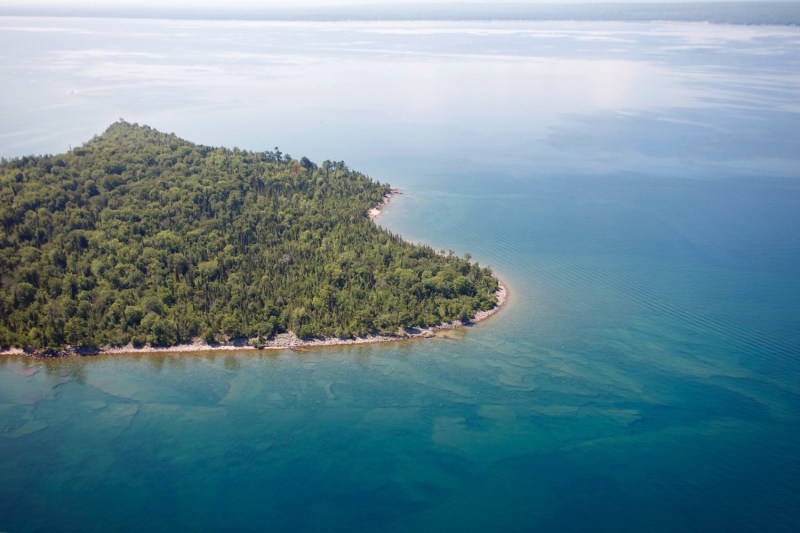
Rabbit Island is a 91-acre forested island situated in Lake Superior, three miles distant from Michigan’s sparsely inhabited Keweenaw Peninsula. Completely undeveloped and uninhabited, for the past ten years the island has served as a place for art, science, and conservation to converge. Designed for 2- to 4-week stays between the months of June and September, Rabbit Island Residency programs offer participants a unique opportunity to investigate, create, and challenge themselves creatively in a wilderness environment. Living and working on the island compels residents to engage directly with the landscape, inevitably provoking a response — practical and creative — to issues of conservation, ecology, and sustainability. Over the years, the island has hosted a wide range of people in search of inspiration, from artists, musicians, and filmmakers to woodworkers, scientists, chefs, and even a National Park Service specialist.
So what does a Rabbit Island residency look like? It starts with a voyage across vast Lake Superior, to set up lodging in a beautiful off-grid cabin fitted with a hanging bed, kitchen nook, open-air toilet, tool shed, and a generous library. (Priorities, right?) There’s also a sauna (a necessity in this Scandinavian-influenced part of the world), a “studio” platform built up in the trees, and a pair of surfboards for those intrepid enough to take on the Big Lake’s fearsome breaks. Food culled from Keweenaw farms is shuttled in regularly to supplement the fish, berries, and wild mushrooms supplied by Mother Nature; potable water is drawn and filtered from the lake. When not working, residents can explore the island’s craggy sandstone coastline by boat, or wander the trails through the white pine woods in search of bald eagles, herons, salamanders, and other wildlife.
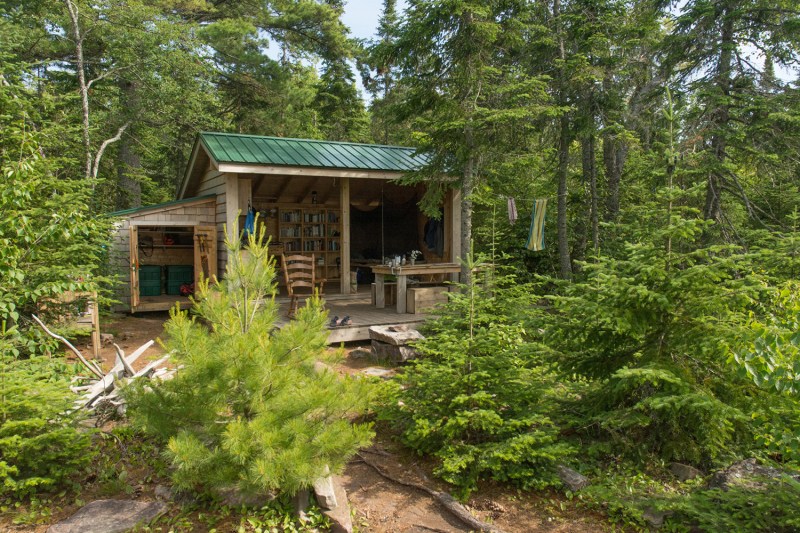
While participants are certainly encouraged to create on the island, there are no strings attached when it comes to results. The main focus of the residency is to shift consciousness in those who experience the island. Program cofounder and director, Andrew Ranville, himself an artist who has experienced residency programs all over the world, agrees that the isolated wilderness setting and the immanence of the lake make Rabbit Island unlike any other artist retreat.
“There’s something very symbolic about being on an island. It’s like going back into stories through history — it’s either salvation or exile. In a way it can be both, depending on the day, or the weather. The practicalities of living and working on an island, surrounded by all this water, make it a very visceral experience of making and doing. You see that you can affect the place in a real way, but it can also affect you.”

While the work created as a result of the residency program is significant (an opera, a dance cycle, architectural renderings, scientific research projects, and countless works of visual art), Andrew sees the real value in being how the experience impacts the “why” behind participants’ work. “People have talked about how incredible it was to experience these remote environments. You’re left to your own wits to discover your own practice.”
The residency is certainly not for the faint of heart. While the setup is all-inclusive in terms of the basics, participants have to learn to make do without electricity, trash collection, or even having an art store nearby. You have to learn to make a friend of the elements, from hunkering down during one of Lake Superior’s legendary gales, to learning how to embrace the bone-chilling cold (even in summer) of the waves. “Once, in the early years, we had a boat capsize in the mooring. Battling the waves to get things out of the boat was like something out of classic literature.” It’s truly a Robinson Crusoe type of experience that will challenge your fortitude and, inevitably, sculpt your own sense of possibility and purpose.
To learn more about opportunities for a Rabbit Island residency, visit their website. You can see more of the island and its guests on its Instagram account @rabbitisland.
